#The Boleyn Traitor
Explore tagged Tumblr posts
Text

@theladyelizabeth
All set for the new Phillipa Gregory novel
13 notes
·
View notes
Text



Such a mood
64 notes
·
View notes
Text
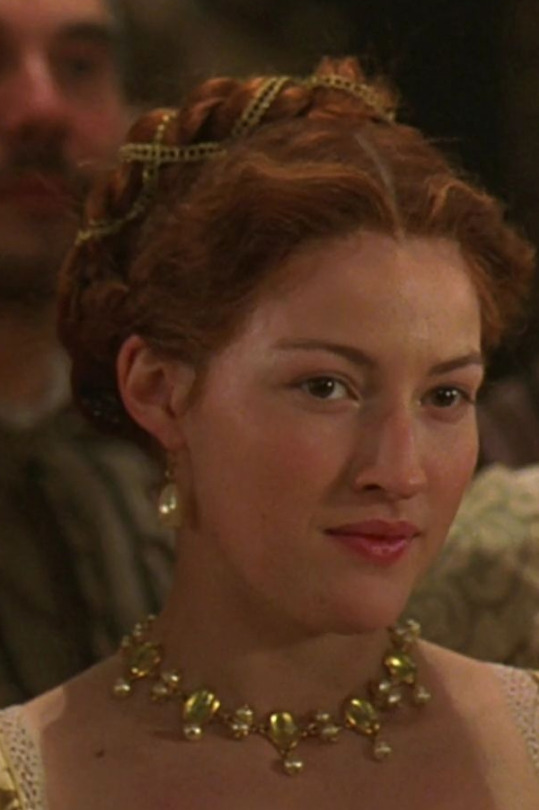
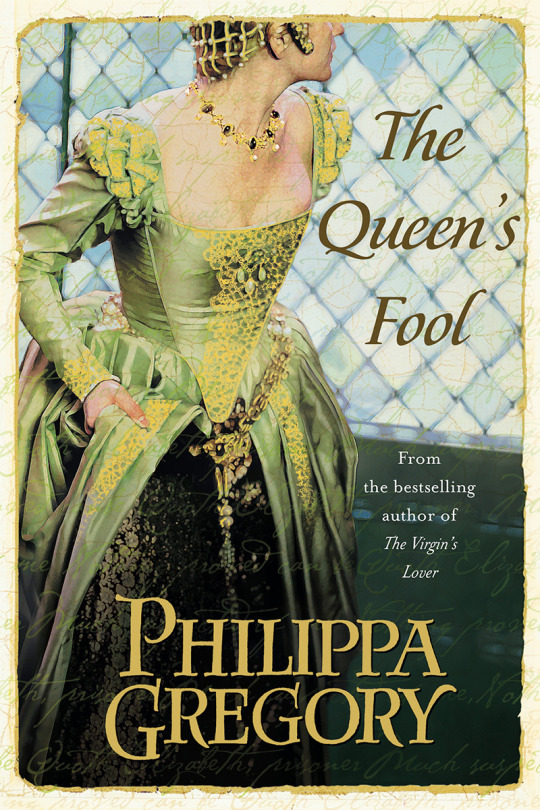
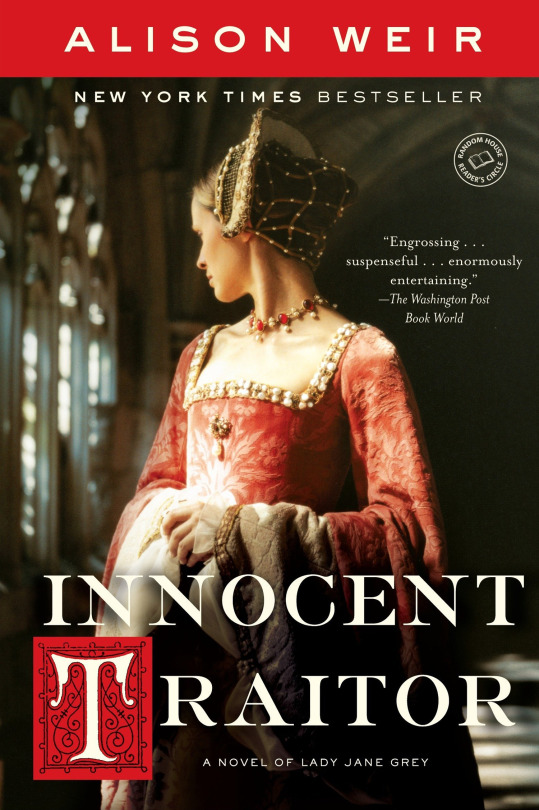
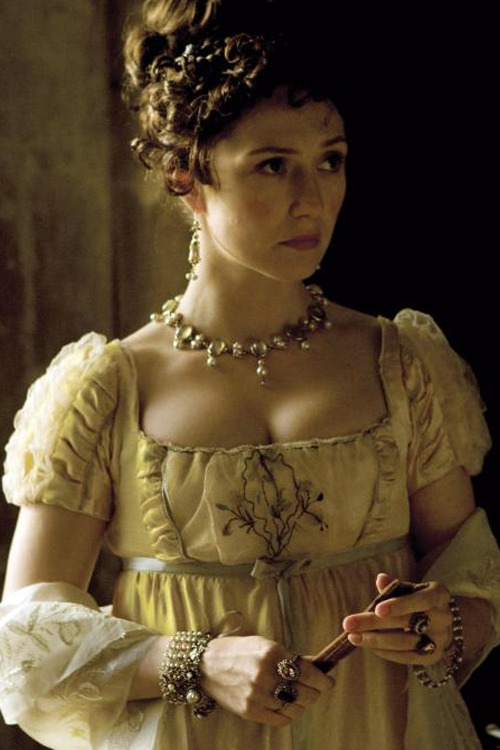
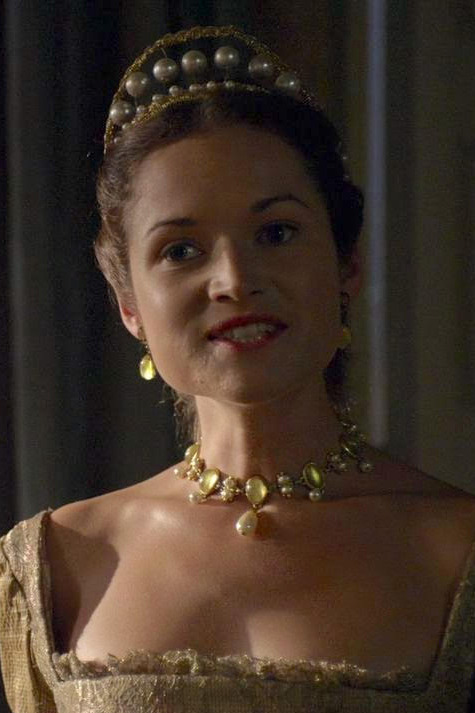
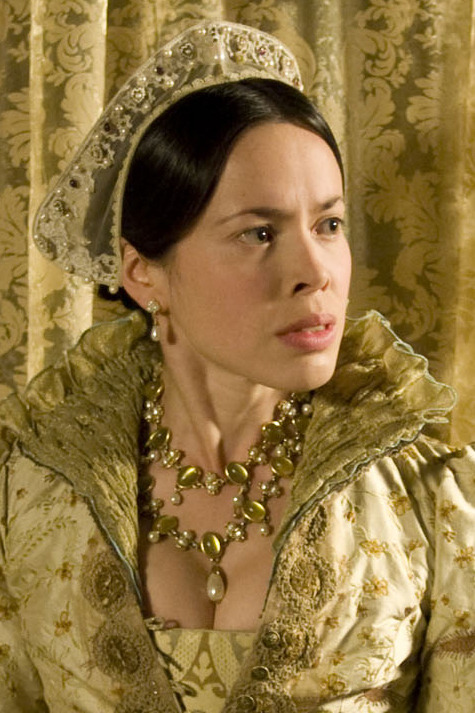
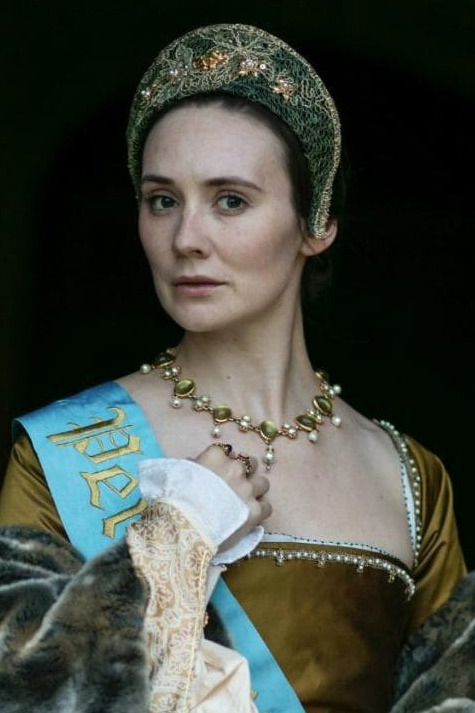
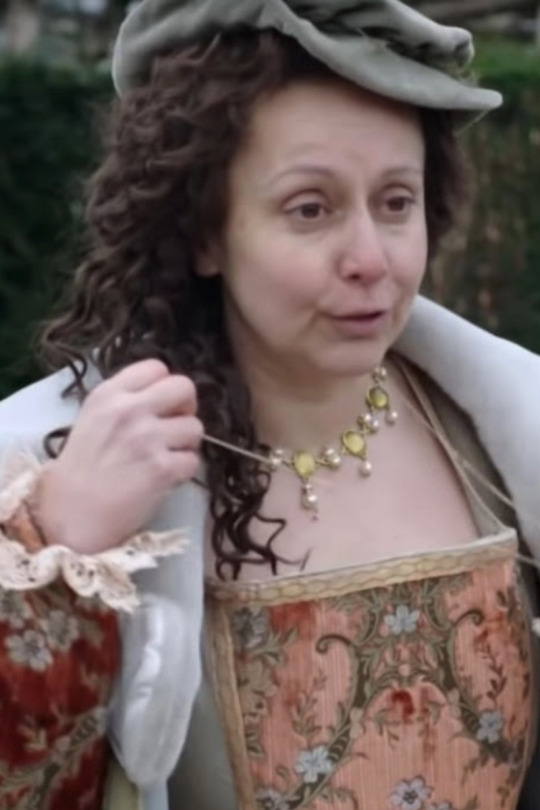
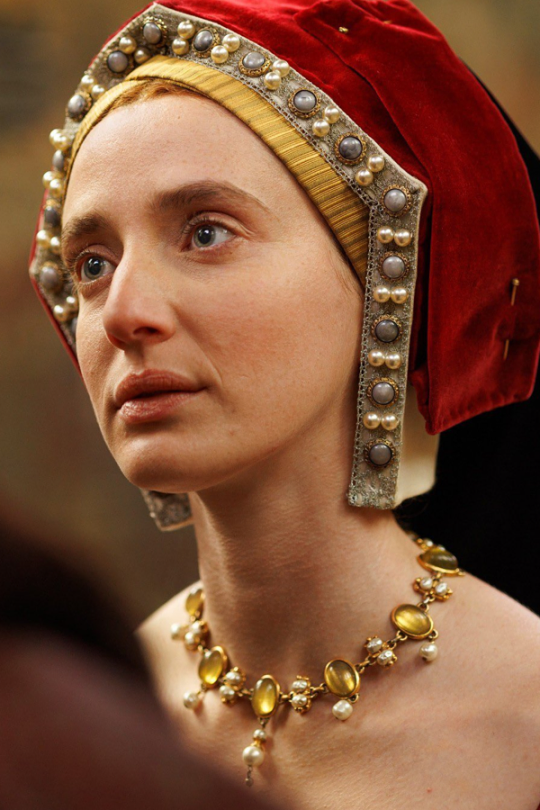
These amber necklaces made their first appearance in the 1998 film Elizabeth, where they were worn by several ladies-in-waiting, including Kelly Macdonald as Isabel Knollys (pictured) and Emily Mortimer as Kat Ashley.
Because quite a few were made, all of the necklaces documented here may be "different," though they all clearly come from the same set. Thus, for the purposes of documentation, Recycled Movie Costumes considers them "the same."
In 2003, one of the necklaces appeared on the cover of Philippa Gregory's The Queen's Fool. In 2007, it was seen on another book cover - this time photoshopped red on Alison Weir's Innocent Traitor.
In 2009, the necklace was worn by Carice van Houten as Maria Oldknow in From Time to Time.
In 2010, one necklace was worn by Joanne King as Jane Boleyn née Parker, Viscountess Rochford in the fourth season of The Tudors, and later that same year, two of the necklaces were worn by Fiona Hampton as Lady Matilda in The Sarah Jane Adventures.
In 2016, Claire Cooper was spotted wearing one of the pieces as Anne Boleyn in Six Wives with Lucy Worsley.
In 2021 it was worn in The Boleyns: A Scandalous Family on an extra playing Margaret of Austria, before being used in 2024's Wolf Hall: The Mirror and the Light, where it was seen around the neck of Lilit Lesser as Princess Mary Tudor.
256 notes
·
View notes
Text
HOUSE OF THE DRAGON S2E8
i finally managed to rewatch the episode and here is again my personal opinion about it.
essos: again they want the stepstones, those damned rocks. the stepstones are like the harrenhal of the sea: everybody wants it, but nobody manages to keep it for a long time without dying painfully.
sharako lohar is really cool. kinda looks like daario naharis (the first one).
aemond burning sharp point because he was angry about rhaenyra's new dragonriders. sir, you have too many problems.
my poor king aegon. he asking himself what was the point of all of this now that rhaenyra managed to have more dragons to her side. and larys wanting to help him is kinda heartwarming but also creepy as fuck at the same time.
rhaena starving and dehydrating herself for a dragon instead of taking care of the future of house targaryen. as i said previously, this obsession reminds me of little aemond (before he became a completely menace to society).
jace beefing with ulf. he is angry with the dragonseeds and he wants to prove them that they are not like every trueborn targaryens. well, ulf jests too much about it in my opinion. seeing hugh and ulf going out of the room together, foreshadowing iykyk.
rhaenyra and corlys. he sees what she cannot, just like rhaenys, he's a good hand of the queen. when they mentioned dreamfyre, my heart melts because she's one of my favourite dragons. finally, corlys saying that his ship's name is "the queen who never was" and then we see the boleyn which pictures rhaenys holding the crown...such an heartbreaking moment.
daemon and ser alfred. daemon has already decided to let the crown go and follow rhaenyra as we understand it from his last vision when he didn't take the crown from his brother. i adored how he looks at ser alfred since we all know how he hates traitors and the details of ser alfred hearing "traitor" whispered was perfect. let us all appreciate again ser simon "no treason on my watch" strong.
alicent and helaena. it's heartbreaking. she really loves her daughter and now that alicent does not have power anymore, she fears for her life. i loved the scenes we had between alicent and helaena a lot.
AEMOND HOW FUCKING DARE YOU. your sister is an innocent and plus she is still the queen, as your mother kindly reminded you. i have to say, dear alicent, that you should have behaved like this with him before he became a fucking problem to everyone. i loved that when he looks again at helaena, alicent raises her voice to him "NOT LIKE THIS"
ser criston cole, i despise alicent for saving your life that night. "she is my beacon", it reminds of the hightower's sigil, i adore this detail. i fucking love gwayne. "then resist it", ser gwayne slaytower, the man you are. last but not least, dear ser crispy you should have imagined that a war with dragons would have been a thousand times worse than the wars you saw in your life.
jacaerys targaryen, the pout of the realm. btw, baela and jace the supreme couple of westeros.
rhaenyra at dinner with the dragonseeds. addam answering to ulf that there will be a time to show who of them is really a coward (iykyk). addam of hull, the man you are. i adored the fact that rhaenyra chooses him to go with her to harrenhal.
daemon's vision. i adored it. bloodraven, the white walkers, the death of dragons and daemon's death which also represent the loss of power of house targaryen and then the red comet and daenerys, the rebirth of house targaryen. AND HELAENA.
i hope that in season 3 we'll have a further explanation of helaena's powers and what she can do, because in that scene it's clear that she entered the vision somehow. infact, we also see her kinda smiling after it. (again, foreshadowing: she's standing on a balcony, iykyk).
helaena and aemond. he still tries to convince her to go to war with dreamfyre. she answering back at him that she knows everything and that she saw everything, she does not speak in riddles anymore, she's clear as fuck, and those words hurt aemond like a knife. "aegon will be king again. he's yet to see victory [...] and you'll be dead". and when he threatens her, she says that it wouldn't change anything. he is scared now, he knows how it will end and everything he has done for glory will only bring him into the void.
rhaenyra and daemon at harrenhal. i'm glad to hear them speak in high valyrian to each other once again, kinda missed it. daemon's speech was just amazing and pure perfection.
alyn is angry as fuck and he has all the rights to be it. when he said to corlys that he remembers them now only after the death of his children was like a slap in the face for corlys. the best part was alyn saying that if he survives this war, he will continue to live his life as it was before.
mysaria and rhaenyra. "and who pays the price?" and mysaria looking at the dragons.
alicent and rhaenyra. probably my favourite scene. alicent wearing a light blue dress as she used to do when she and rhaenyra were close friends. we can see that now they inverted their roles: alicent who tries to get close to rhaenyra while rhaenyra is cold towards her, as it was after alicent wore the green dress the first time. another detail that i appreciated is when alicent says "i lost my way", another reminder to her house since their motto is "we light the way", now she is lost and alone, she feels like a nobody, she cannot count on her house and family anymore. when rhaenyra says "still, you defend him" OF COURSE SHE IS, despite everything aegon is her son, her first son. THIS IS NOT BOOK ALICENT, as i said previously, i understand this development but i would have liked to see a bit more of book alicent. rhaenyra: "a son for son", what about what helaena have endured? did we forget about jaehaerys?. rhaenyra: "history will paint you a villan. cold queen [...]", alicent: "let them think what they must. i have at last myself [...]", i loved this. they still love and care for each other somehow, when alicent asked rhaenyra to go with her it reminded me of young rhaenyra telling young alicent that she wanted to fly with her on dragonback, see the great wonders across the narrow sea and eat only cake.
seeing everybody getting ready for what they must do kinda makes me feel anxious for season 3 even if i know what happens.
TESSARION. GLAD TO SEE YOU, MY DEAR.
i am not ready for the battle of the gullet and for tumbleton. but at the same time i cannot wait to see the battle above the gods' eye.
finally rhaena found sheepstealer.
otto in a cage, this is larys' hand FOR SURE.
aegon fleeing from KL. cannot wait to see him in season 3. he's yet to see victory.
THE FINAL SOUNDTRACK ABSOLUTELY BEAUTIFUL, AMAZING.
the end: alicent is free. rhaenyra holds all the weight of history on her shoulders.
now we have to wait two years for the most brutal part of the story.
if you want to share your thoughts or talk about it, send a raven! 💌
#house of the dragon#asoiaf#house targaryen#aegon ii targaryen#alicent hightower#dance of the dragons#team green#asoif/got#team black#queen rhaenyra#helaena the dreamer#hotd spoilers#hotd season 2
28 notes
·
View notes
Note
unpopular opinons but i'm asking you for them whats your least favourite depiction of your favourite tudor figures???
Oh I have a lot of feelings about this, but I'm just going to limit it to the big three. So that is, Mary Tudor, Thomas Cromwell and Stephen Gardiner and Anne of Cleves. Sorry because is going to be incredibly long.
1.) For Cromwell. I hate that a lasting 'description' of him, if you could call it such, is that he 'betrayed Anne Boleyn'. He didn't do that. Most people look at his relationship with Anne Boleyn through such a 21st century lens and the reality of it is that, it's not that simple. Claiming that he had Anne executed, or was the main reason for her being executed, is inaccurate because he didn't do that, Henry did that. Henry was the one who wanted false charges but on Anne, Henry was the one who wanted to shame and brand Anne as a type of traitor, harlot, what have you. Henry was the one who wanted her to be disposed of, so that he could marry Jane Seymour. The reason that Anne is dead, is because of Henry, not Thomas Cromwell. People always say that he could've "helped" her or spoken out for her, but why would he? Anne threatened to have Thomas executed months before, and that is when he began to view her as an enemy. Thomas knew the power she had, and did not take that lightly. He wasn't going to extend any grace to the person whom was his ally at one point, and then in a fit of anger, threatened to bring him and his family down and execute him.
"Oh, but she was mad at him because he was giving the money from the monasteries to himself and the king, rather than to the poor." First of all, that is also silly because while we can say that's true, the only reason the poor were having their money taken from them is because of the reformation Anne took an equal part in spearheading. We wouldn't be in this situation if there were was no reformation in the first place. And let's make it clear, that Henry was taking a vast majority of the money as well, so perhaps, Anne should have gone to Henry, the monarch, to ask him to give his portion to the poor, not Thomas. And Anne herself couldve also given the poor money as well.
So yeah, Cromwell being described as a traitor or whatever is so annoying. And then when people are like 'him getting beheaded is karma!' Karma for what? By that logical, Anne getting beheaded is karma for what happened with KoA
I'll put Mary and Stephen together since their toxic mother daughter coded.
2.) I'm not going to say that they were perfect, but let's not act like they weren't the victims of strict, anti-Catholic propaganda. Mary isn't perfect, but neither is any Tudor monarch, and still, she is held to a higher standard than her father or siblings. Yes, Mary I somehow gets far more hate than Henry VIII and I just don't understand. Out of both Elizabeth and Henry, Mary executed the least amount of people. This idea that burning people at the stake, or executing people for hearesy is unique to Mary is so surreal. Henry had 10,000 people executed for not accepting the new religion. Elizabeth also executed people on charges of hersey, in addition to having over 20,000 killed because they fought back against her policies. She also subjected Ireland to so much cultural genocide. But for some reason, Mary is the only one who is held up to any kind of unfair standard. And it's funny that the vast majority of the hatred for her doesn't start there, it starts from when she was a teenager. Not only do people hate her for not accepting Anne Boleyn as a step mother, and for not accepting that she was a bastard, they hate her for being abused. They hate that her being a victim of Henry, Anne, Nofrolk's and Anne Sheldon's abuse makes their favorite historical figures look bad - especially when it comes to making Anne Boleyn look bad. They hate when you tell them that Mary was essentially forced to be her sister's servant or care taker and that she didn't like it. People will argue up and down at how Mary was a spoiled brat for not accepting Anne Boleyn, and it's like...how would you guys act in that situation? It's ridiclous the unfair, and misogynstic standard Mary is held to today. The fact that she is called 'Bloody Mary' when she is the *least* bloodiest of her siblings is so unfair.
3.) And then there is Stephen. Most Tudor media goes out of its way to portray him somewhat more villainous or conniving than he was in real life. Yes, he was petty and he was known to be mouthy but that isn't really a reason to portray him as more villainous than Thomas More, or Thomas Cromwell? I loved Wolf Hall, but I absolutely hate the lasting and unfair impact Mantel left on him as a character, and due to years worth of Anti-Catholic propaganda, he's going to continue to be viewed as villainous for a long time. A lot of this has to do now, with his treatment of Thomas Cromwell. As if Thomas Cromwell wasn't also an aggressor in the fault in their relationship. Aside from taking Gardiner's job, Thomas was also ringing in the end of Catholicism as England knew it and that put Stephen in danger. A lot of contemporary Tudor media points out that Stephen went after Thomas for power, and that can be one reason. But another reason is religion, and Stephen seeing Thomas as a threat, because he had become one. Henry removing Stephen's position as secratary and then giving it to Thomas sent a clear message. It was also quite evident that Stephen was a secret Catholic, which could mean death. On top of that, Thomas also sent spies after Stephen while Stephen was in exile in France, to attempt to bring back information that Stephen was loyal to the pope, and if he found concrete evidence, Stephen wouldn't been executed for treason. He is no less conniving, sneaky, or dangerous than Cromwell, and what he did to Cromwell was done primarily out of self preservation, because in his mind, Cromwell could've had him killed, or at least, he could've put it in Henry's mind. I don't like that Cromwell is somehow seen as a moral compass when it comes to courtiers like Stephen, when they were both trying to survive, and if we're looking at who threw the first stone historically, it was Thomas. I clearly love these two, I like to write historical fiction focusing on a supposed relationship, but I don't like how Stephen's judged heavily on how he treated Thomas.
And then, there is the relationship between Wolsey and Stephen, that Mantel butchered. Wolsey and Gardiner remained LIFE LONG friend. Historically, both Wolsey and Gardiner were both lowborn, as was Cromwell....Idk why Mantel pushed this idea that Garinder hated people who were lowborn, and climbed from the bottom to the top, when he historically was like that and he was a bastard. Why would he hate Wolsey for being lowborn? Historically, Wolsey reached out to Gardiner toward the end of his life, and they kept consistent contact. Gardiner also took a large chunk of Wolsey's household and offered them wages. This was clearly a favor for Wolsey.
Personally, and just, run with me here, I think he was gay historically so the slander on him is ten fold just becaws of that. Right next to Gregory Cromwell.
4. And then lastly there's Anne of Cleves. My most controversial opinion is that I need people to stop calling her the 'lucky one', and I hate that people tend to look over how she may've been greatly offended by what happened with Katherine Howard (whom I love!). Yes, AoC survived, but only after months of ridicule, slander and rumors spread by Henry. She is described as the 'lucky one' only after being insulted astronomically by Henry. Yes, she got to be rich, she got to have lands, etc., but she didn't come to England for that. She came to England to be a queen, and to unite Germany and England.
Also being called the 'lucky one' came with so many caveats. Keep in mind, this was a twenty four year old girl. She probably wanted to marry, have children and at least, have a legacy. Because of what happened with Henry, that was not possible. Aside from Henry spreading rumors that she was ugly, even commenting on her nudity, and virginity, no many would be dumb enough to marry and have a child with Anne of Cleves. If she married and had a child, especially a son, it would've been seen as an insult to Henry and she'd very quickly be viewed as his enemy. So here we have a twenty four-five year old girl, who can't be married, or be a mother, all to please the ego of a king. And even her wealth came with a caveat; she couldn't leave England. She was essentially trapped there because if she left, all that power, that land, status, it would be gone. Henry wanted to trap her, he wanted to keep her there so she couldn't find a foreign husband and make another match that could potentially be a threat to him in the future. That is not a good life, that is not a good deal!
And lastly it is so overlooked at how she may've been offended by Katerhine Howard. Tudors did some MAJOR PR when they danced and while I don't doubt that she wasn't hateful toward Katherine, she was still the other woman. AoC is a noble princess, so scratch that she is royalty. What makes people thinks he happily tolerated her husband having an affair. She knew to be quiet and accept and annulment, but that doesn't mean she was happy about it. YES they danced at Christmas, even after Henry went to bed. But appearances meant everything back then, and AoC not only understood English court at that that time, but was also once again, a royal woman herself. She knew to keep face, so that rumors wouldn't spread. Katherine was also the queen at that point, she couldn't disrespect her in any way, so of course, she'd be cordial. But do people think she had so little self worth or love to the point where they act like she was happy and wholly loving toward the woman who took her position as queen, when AoC had literally left her home in order to be queen of England for politics?
4. )Honorable mention, Gregory Cromwell....if you get deep enough into Tudor circles, you see he was accused of buggary. Most people decide to claim he was either a rapist or cheated on his wife, however, the more likely outcome is that he was gay and caught with a man. So yeah technically he did cheat, but it's better than him being a rapist!!
Send me an unpopular opinion it can be about tudor era stuff, writing or hell even the last kingdom
9 notes
·
View notes
Text
THE MIRROR AND THE LIGHT EPISODE ONE ANALYSIS
Part II — The Dog


The new series premiered yesterday (10 Nov), and I am keen to analyze the first episode titled 'Wreckage.'
── .✦First and foremost, I want to clarify that my analysis is based on the novel, "The Mirror and The Light" At times, I may reference historical events as well.
── .✦Secondly, this analysis is grounded in my personal perspective; yours may differ, and I welcome a respectful discussion in the comments.
── .✦Lastly, please be advised that this analysis will contain spoilers.
Now in the first episode from series two, we have not only Wolsey back as a ghost, but him revisiting that dog reference at the end of the episode. But what I notice is that the meaning was transmuted into something deeper, not only Cromwell the loyal server and friend to Wolsey, but Cromwell the protector of those who he feels inclined to.
In episode two of 'Three Card Trick' we see Cromwell on his way to becoming one of Wolsey's servers. And although, from what I've noticed, Boleyn seems to call Gardiner "butcher's dog", Stephen turns the situation and puts Cromwell in the place Wolsey's puppy.
For now, we have two protégés — Mary and Thomas Wyatt — and for those who have read the book there's more to add afterward.
In the book we have a strong reference to what this means with Crumb:
"You know what I am, he thinks. You should by now. Henry Wyatt told me, look after my son, don’t let him destroy himself. I have kept the promise though I had to lock him up to do it. In the cardinal’s days, they used to call me the butcher’s dog. A butcher’s dog is strong and fills its skin; I am that, and I am a good dog too. Set me to guard something, I will do it."
And we can see that in the episode when Cromwell is with the boys, and let all of his past doings —the promises he made— come out to light.
That being said, we can go back to when he visited the Poles. In my view, when he was entreating with them about Lady Mary's matter, he meant not only to get things straight about treason schemes but also make sure they don't put Mary in a place she can be framed as a traitor. To me it's not about saving the Poles, it's more about taking Mary out of their plot. And it is clear to me when after Margaret Pole called him a "Snake" he says:
'Oh no, a dog, Madam'
I think we can see the same determination when at the council meeting he drags Fitzwilliam after a rage burst. Fitzwilliam could — and seemed to— anger the king (and God knows what that man could do after having his pride hurt). Mary's life was at risk, and even if Henry thought all that energy Cromwell used was for him — in loyalty — I believe he had done it to save Mary once more from her father's anger. We can add some personal gain there too, but I think the main message was that.
I think we'll see more of this plot with the addition of Thomas Wyatt on the show. I hope he's to be introduced next Sunday 🤞🏾. And we're yet to see Jenneke and Wolsey's daughter.
Sorry if I let some other information out of this analysis (you can add in the comments). I wish I can do a better thread for the next episode. And I'm making this post from my phone. Baaad... Bad decision.
19 notes
·
View notes
Text
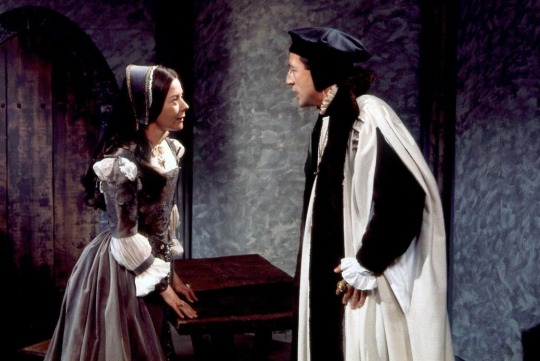

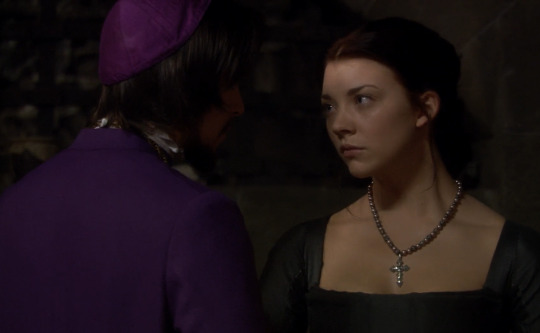
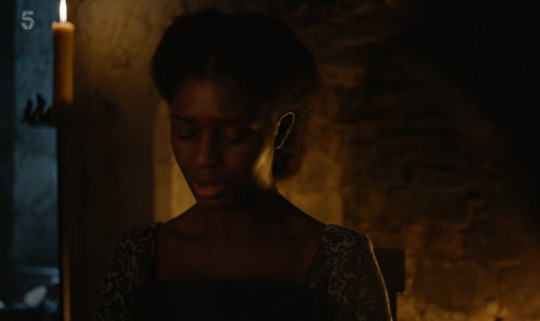
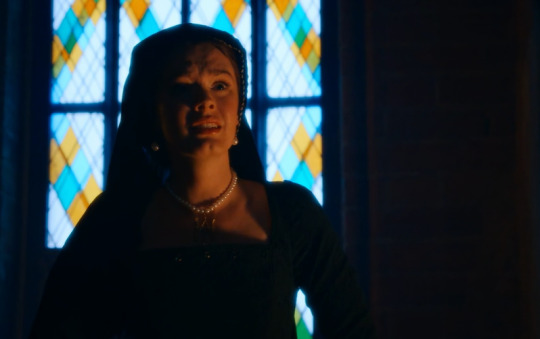
May 16, 1536 - Archbishop Cranmer Visits Anne in the Tower
"This day at dinner, the Queen said that she should go to a nunnery and is in hope of life." - William Kingston to Thomas Cromwell, May 16, 1536
"Only Anne herself, therefore, could set Henry free. What she said to Cranmer we will never know. But it was enough for the Archbishop of Canterbury to pronounce her marriage dissolved the next day. And later on the 16th, it may be by coincidence, it may not, it was determined that Anne should die, not by the agony of the fire, ut at the hands of the executioner of Calais." - David Starkey, Six Wives: The Queens of Henry VIII (2001)
"Did the archbishop hint at life in return for compliance? Did Anne confess to a consummated relationship with Percy or a third party, a quid pro quo, perhaps, for Henry not rejecting Elizabeth? There is no way of knowing what passed between the client, now archbishop, and his patron, now a condemned traitor. In all probability the meeting was what it purported to be, pastoral." - Eric Ives, The Life and Death of Anne Boleyn (2004)
"It's been suggested that [Cranmer] visited to try to convince her to 'confess to an impediment to her marriage'. This seems very probable given that that day at dinner, Anne told Kingston that she would go to a nunnery and that she was 'in hope of life'. Perhaps Cranmer offered Anne a deal: agree to an annulment and your life will be spared." - Natalie Grueninger, The Final Year of Anne Boleyn (2022)
#tudor era#dailytudors#tudorerasource#perioddramaedit#the six wives of henry viii#dorothy tutin#natalie dormer#the tudors#thomas cranmer#jodie turner smith#anne boleyn 2021#amy james kelly#blood sex and royalty#another belated post sorry!#there's sm dispute over what happened on May 16#so I just wanted to show y'all some of the opinions#Starkey and Grueninger think Cranmer visited to get her to agree to the annulment#Ives thinks it was just pastoral#and I didn't put it here but#John Guy and Julia Fox think Anne never conceded anything and Cranmer just ignored her and annulled it anyway#historiography is rly fascinating#anneboleynedit
21 notes
·
View notes
Note
i'm shocked that theirs no evidence of their being a order to have all of anne boleyn’s portraiture be destroyed one of the things i hear anne fans talk about all the time is a attempt to "erase" her from history by henry and jane!! they make it sound like their was a bonfire of all of anne's paintings and personal belongings like that one scene from sleeping beauty
✨ terfs/zionists fuck off ✨
it’s another one of those popular anne boleyn isms that’s uncritically widely accepted but i don’t think it holds up.
there’s simply no evidence of such an order. plenty exists of her to suggest there was no top down command that was acted upon. more reasonably, she likely simply became an unpopular figure to have displayed in one’s house after her execution… but she was still referred to posthumously as “the late queen”, her iconography was left in place in actively used palaces, henry kept several of her possessions in his inventory, and her portraiture outlasted the tudor period with one surviving as late as 1773 in the lumley collection. so it seems improbable that there was a formal order or enforced policy of erasure or damnatio memoraie against her, as an anointed queen and mother to a child of henry’s, illegitimate or otherwise — nor does there seem to be much evidence of that as a strategy taken against other traitors. henry howard’s portrait still survives, for example.
#anne boleyn#📝#this is claimed about katherine howard too and it’s simply not true and down to people being stupid#the claim about her body being destroyed by quicklime is genuinely gross#i think there’s a desire to perceive anne boleyn as uniquely victimised by history#but in truth i think that comes from a place of ignorance abt history
13 notes
·
View notes
Text
Meanwhile, the Franco-papal conference went ahead in October despite Henry’s protests. News from Anne’s cousin, Francis Bryan, whom Henry sent to Marseille with Stephen Gardiner on condition ‘they never present themselves to the pope’, only served to enrage him. The proceedings began, Bryan’s letter solemnly recounted [...] when Francis kissed Clement’s foot and grovelled before him, after which the Duke of Orléans married Catherine de’ Medici with the pope officiating, and without any resolution of Henry’s affairs. After reading Bryan’s dispatch, Henry crumpled it up and threw it on the floor. Stomping back and forth, he called Francis a traitor, a villain and the pope’s gull.
Hunting the Falcon: Henry VIII, Anne Boleyn & the Marriage That Shook Europe, John Guy & Julia Fox
13 notes
·
View notes
Photo

Pilgrimage of Grace
The Pilgrimage of Grace is the collective name for a series of rebellions in northern England, first in Lincolnshire and then in Yorkshire and elsewhere between October and December 1536 CE. Nobles, clergy, monks, and commoners united to oppose both the decision of Henry VIII of England (r. 1509-1547 CE) to split the Church in England from Rome and his policy of closing monasteries and confiscating their estates, the Dissolution of the Monasteries. Other grievances included the fear of new taxes and confiscation of Church property and a general lack of political representation in the north of England. The Pilgrimage of Grace, so-called because its participants considered themselves 'pilgrims', did not threaten London, but it was the largest rebellion of the Tudor period (1485-1603 CE). The 40,000 protestors were dispersed by the threat of armed force and false promises of pardons and reforms but, ultimately, many of the leaders, including the lawyer Robert Aske and Lord Darcy, were executed as traitors and Henry continued apace with the Reformation in England.
Henry VIII's 'Great Matter'
Henry VIII had a problem. He wanted to divorce his first wife Catherine of Aragon so that he could marry the younger and more beautiful Anne Boleyn (c. 1501-1536 CE) who might give him what he so desired: a male heir. The problem, which the king called his 'Great Matter', was that in the Catholic Church divorce was not permitted. After much diplomatic activity, the Pope refused to grant Henry an annulment of his marriage. The king, aided by his Chancellor Thomas Cromwell (l. c. 1485-1540 CE), then decided he would make himself head of his own Church in England and so be able to grant himself his own divorce. Consequently, Thomas Cranmer, the Archbishop of Canterbury formally annulled Henry's first marriage in May 1533 CE which meant that Henry could now marry a second time (which he had already done in secret a few months before). There was the additional consequence that Henry's daughter with Catherine, princess Mary (b. Feb. 1516 CE), was declared illegitimate and so disinherited. Henry was excommunicated by the Pope for his momentous actions, but this was only the beginning.
The Act of Supremacy of 28 November 1534 CE formally made the English king head of the Church of England which meant that Henry, and all subsequent English monarchs, only had one higher authority: God himself. The next scene in this momentous drama came in 1536 CE when Henry presented Parliament with a bill to abolish all monasteries in his kingdom, the Dissolution of the Monasteries. The bill was passed and the estates of the monasteries began to be redistributed to the Crown and Henry's supporters. The abbots of Glastonbury, Colchester, Reading, and Woburn were all hanged. And so began the English Reformation which would see Catholicism give way to Protestantism in England. Finally, Cromwell introduced The Injunctions in August 1536 CE, a set of recommendations on what exactly the clergy should be teaching their congregations such as explaining better the Ten Commandments and the Seven Deadly Sins.
Continue reading...
18 notes
·
View notes
Text










Finally visited the Tower of London! Managed to get some photos of the famous Dudley carving, a picture of the Traitor’s Gate water entrance from the Thames, and the monument on Tower Hill where several notable people were executed.
Missed some parts, including the White Tower (don’t ask me how lol) and the Chapel of St Peter ad Vincula where Jane Grey, Anne Boleyn and others are buried - but that just means I can visit again in the future 😉
10 notes
·
View notes
Text
Terrible Fic Idea #73: Game of Thrones, but make it Lancelot
As anyone can tell you, I have a terrible weakness for female Jon Snow fics, largely because a female heir to the throne allows you to combine claims and explore facets of Westeros in a way that can't be easily done with rival male claimants. And then I thought: if I can have an Anne Boleyn, why not a Lancelot?
Or: What if Jon Snow, the most famed knight of his generation, had an affair with the Queen of Westeros?
Aka: The Lord Protector Fic
Just imagine it:
Everything follows canon, except Cersei Lannister dies in childbirth with her second child, Myrcella. This bothers her husband not at all and, despite Jon Arryn's urging him to remarry to secure his throne, Robert works his way through a series of brothels and mistresses before being forced to marry 14-year-old Margaery Tyrell in 297 in exchange for House Tyrell paying off some of his debts.
When Jon Arryn dies the following year, Robert and his court head north as per canon. While there, Sir Barristan takes interest in young Jon Snow - perhaps he sees something of Rhaegar in the boy, maybe he imagines he sees something of his presumed uncle Arthur Dayne's talent in him - and offers to raise him to knighthood with the aim of one day serving in the Kingsguard.
Ned is unable to turn down the offer, and reluctantly allows Jon to accompany them to King's Landing.
Jon quickly gains a reputation for gallantry and chivalry to rival either Barristan the Bold or Arthur Dayne - he intervenes when Joffrey tries to have Lady put down, makes a strong showing in the Hand's Tourney, and preforms several small acts of standing up for ladies/smallfolk/children that are quickly mythologized. Within two years he's knighted, with some asking if he will be allowed to take up the Sword of Morning as a presumed bastard of House Dayne.
Princess Myrcella is particularly taken with him after he defends her from Joffrey and demands he become her sworn sword until a position opens up in the Kingsguard.
His actions also draw the attention of Queen Margaery, who is even less happy in her position as queen than Cersei was but much better at hiding it. At first it's just friendship couched in a courtly love tradition, but by 299 they're lovers. When she gives birth to Prince Harlen a year later there's no doubt in her mind that Jon is the father.
Meanwhile, King Robert is almost as taken with Jon as his wife and daughter, for here is a version of Ned Stark who is also knightly, willing to take part in tourneys and feasts and dancing, and cannot help but see Jon as the son he never got to have with Lyanna. Instead of allowing Jon to take a position the Kingsguard as they open up, he showers Jon with riches and titles.
After winning a huge purse at the tourney in honor of Prince Harlen's second birthday - and Queen Margaery's second pregnancy - Jon is named Lord Cargyll, taking up the name and lands of the extinct Crownlands house of the same name, changing the golden goose in their banners to a golden direwolf.
After a falling out with Renly a year later, Jon is named Master of Laws...
...and six months later Robert's vices finally catch up with him, infamously being found dead in brothel of particularly ill-repute following an orgy.
Joffrey, now 17, is still very much his mother's son. One of his first acts on being named king is to declare his father's second marriage invalid and his half-siblings, Prince Harlen and Princess Lenna, bastards. His second act is to declare most of his father's Kingsguard and small council traitors for allowing his father to be "lured" to the brothel where he was "assassinated by Targaryen loyalists."
This naturally goes down badly, and though some of the lords named are captured and executed - Ned Stark, Petyr Balish, and Grand Maester Pycelle among them - most manage to escape. Jon in particular is able to get Margaery and the royal children to his lands in the Crownlands, and start raising a rebellion in Prince Harlen's name.
Robb ends up leading an army south to avenge his father, as per canon, but is never named King in the North. He does win several key victories against Tywin Lannister in the west, eventually taking Tywin himself captive. His victories earn him the nickname the Hammer of the West, a la Edward I.
Jon leads the fighting against the Lannister forces in the east, eventually taking King's Landing. The fact that he's able to keep his army from sacking the city and offers Joffrey the chance to take the black earns him the nickname Jon the Just. (Joffrey naturally refuses, tries to attack Jon in a rage, and is very swiftly killed in self-defense.)
In the aftermath, 4-year-old Harlen is crowned king. His mother Margaery is named Queen Regent, with Jon being asked to serve as Lord Protector of the Realm instead of taking one of the open spaces in the Kingsguard. He agrees, and two years later weds Margaery in a ceremony forever known as the Rose Wedding. (It's not as flash as the Golden Wedding, but is still something else.)
Meanwhile, Tywin is sent into exile for his part in abetting Joffrey's actions, with Tyrion taking over as Lord of the Rock. He and Sansa eventually wed and, though their marriage is never one of love, both are are content with their choice.
Robb marries Myrcella. Theirs does end up being a love match, becoming taken with each other when they first meet in the aftermath of Harlen's Rebellion. After their marriage they seem to make it their effort to make up for all of House Stark's losses, eventually having eleven children live to adulthood and marry into various important houses. By their deaths they're known as the Grandparents of Westeros.
Jon goes to his grave thinking he is Ned Stark's son, not knowing he's inadvertently brought about a Targaryen restoration.
Bonuses include: 1) the full force of angst and drama being brought to bear on Jon and Margaery's relationship, from its start as a mutual crush when they first come to each other's attention on the journey from Winterfell until they finally marry in 306. This should include Jon's desire never to father a bastard, Margaery's awareness that infidelity in a queen is treason, and their inability to keep away from each other. Extra bonus points if Margaery is able to pass Harlan and Lenna off as Robert's even to Jon, and not admit the truth until many years later; 2) every possible Camelot illusion that can be made to King Robert's court, made with the full knowledge that the beauty and glamor and chivalry of both courts is just smoke and mirrors, and one doesn't have to go looking very hard to find the gritty, painful, ugly reality beneath; 3) Jon using his time as Lord Protector to force through something like the Magna Carta, which enshrines basic rights that even kings must follow far more than the RL document actually did; and 4) Sansa having a prominent B-plot, slowly realizing during her time at court that not everything can be a song. The turning point of this is not Ned's execution, but her discovery of Jon and Margaery's affair years before - and her active choice to cover for them so that someone at least gets their happy ending.
And that's all I have. As always, feel free to adopt this plot bunny, just link back to me if you do anything with it.
Other Jon Snow Headcanons: Aelor the Accursed | Aegon the Adopted | Aegon the Undying | Aegon the Unyielding | Aemon the Adventurous | Baelor the Brave | Bastard of Winterfell | Daemon the Destroyer | Daena the Dreamer | Daeron the Desired | Dyanna the Defiant | Elia the Magnificent | Jon the Fair | Jon Whitefyre | King of the Ashes | Lady Arryn | Lady Baratheon | Lady Lannister | Lady Stark | Lord of the Dance | Lord Protector | Maekar the Maester | People's Queen | Prince Consort | Prince of Summerhall | Queen Mother | Queen of Nightingales | Red Queen | Rhaegar the Righteous | River Queen | Shiera Snowbird | Visneya the Victorious | Weirwood Queen | Wolf Queen
More Terrible Fic Ideas
#plot bunny#fic ideas#game of thrones#a song of ice and fire#got#asoiaf#jon snow#jon snow is a targaryen#secret affair#chivalry#courtly love#robert baratheon#margaery tyrell#Jon x margaery#targaryen restoration
47 notes
·
View notes
Note
richardiii and frideswide lovell? I am only just hearing of this
Hi! We don't know the truth and don't know the exact details, but yes, that's definitely a (potential) relationship worth discussing!
For those who are unaware, Frideswide Lovell was the daughter of John, 8th Baron Lovell, and his wife Joan Beaumont. This made her the sister of Francis Lovell, the future chamberlain and best friend of Richard III - who she may have had a personal connection to in her own right.
Frideswide seems to have been much younger than her siblings and was not born before 1363, most likely in 1464. She was orphaned soon after her birth, with her father dying a year later and her mother a year after that, leaving her to spend her childhood and adolescence in the household of her brother's parents-in-law. The first properly contemporary mention of her is found in the 1470 pardon Edward IV's government issued for Henry FitzHugh and all those in his household. Unfortunately, not much is known about her beyond that, including the kind of education she received.
When she was around 16, Frideswide married the 15-year-old Edward Norris, oldest son of William Norris of Yattendon and his first wife Joan/Jane de Vere. The teenage couple had their first son, John, in 1481, followed by a second son, Henry, a year later. The latter would be executed in 1536 as one of Anne Boleyn's alleged lovers.
Here's where it gets interesting. As we know, Richard III became King in 1483 after deposing his nephews. Michèle Schindler, author of the book Lovell Our Dogge: The Life of Viscount Lovell, Closest Friend of Richard III and Failed Regicide, has speculated that Richard may have been having an affair with Frideswide, aka his best friend's sister, during that time.
To quote Schindler from a blog post about Frideswide:
In 1483, Frideswide received a "reward" of 50 marks from Richard III after he was crowned king. Perhaps it was this, her support and closeness to her brother`s close friend, that caused a rift between her and her husband, and the couple was divided over political opinions which they needed some time to overcome. Edward`s father William, who had originally supported the Lancastrian cause, had accepted Edward IV as king, but rebelled against Richard [in support of the Princes in the Tower] in autumn 1483. Edward Norris may have supported this, though he never acted against Richard, while Frideswide seemed to support Richard.
However, there is evidence from 1484 which throws a rather different light on Frideswide`s marriage and her relationship to Richard. While her "reward" from 1483 could well have been simply a gesture of friendship by the new king towards his closest friend`s sister, their interactions clearly did not stop there. In August 1484, Richard granted her an annuity of 100 marks, a rather large sum. While this has traditionally been assumed to have been because of her father-in-law`s rebellion, leaving her husband disinherited, this does not seem to have been the cause. None of William`s other children, nor his wife, was granted anything by Richard.
Naturally, it could be that Richard chose to favour Francis`s sister over the rest of her marital family, but this is contradicted by two facts: one, that the grant was for unspecified "services" to the king, not, as that to other traitor`s relatives, as a compensation, a generous gift by the king. Secondly, and perhaps more importantly, is that a second grant of an annuity of 100 marks was made from the same venue, dating from 10th January 1485. This grant was not a confirmation of the first, but was added to it, meaning that Frideswide received 200 marks yearly from Richard, a sizable sum, more than the Countess of Oxford, or even his own mother-in-law, received.
The key to this may lie in the fact that the second grant was dated back nine months, and appears to have been made just after Frideswide gave birth to her third child, a daughter called Anne. Very notably, the grants to her, for unspecified services to the king, have the same wording as one to Katherine Haute, a woman often assumed to have been the mother of Richard`s illegitimate daughter Katherine, Richard made years earlier.
Equally notable is that Richard made grants to Francis on the same days as he made those to Frideswide, as a compensation for equally unspecified services, and that Frideswide appeared to have lived with her brother [rather than her husband] while pregnant.
That Henry Norris, in later years, appeared to not treat Anne as his sister, and that William Norris, Edward`s father, later favoured Frideswide`s sons, even apparently helping them become established at court, but not Anne, might also point towards the idea that there was at least a question mark over Anne`s paternity, and that she may have been Richard`s.
If so, Frideswide was in a bad position after Richard`s defeat and death at Bosworth only eight and a half months after her daughter`s birth. It seems, though, that she and her husband Edward made the best of it, and even reconcilliated. In around 1486, Frideswide gave birth to her last child, a girl called Margaret, presumably after Edward`s sister. From surviving documents, Margaret seemed much closer to her brother Henry and her grandfather William, again showing up a difference to Anne."
Of course, we don't explicitly know if this is true - and if it is true, we don't know the exact details - but the circumstantial evidence is indeed very strong, and it seems very plausible to me. I would love to know more about Frideswide, who seems to have had a very interesting and tragic, albeit mostly unknown, life.
In short, it's very interesting and opens up a lot of possibilities, for sure!
#ask#richard iii#frideswide lovell#my post#I've seen some theories that this potential affair began after Richard's son died and/or because he & Anne began drifting apart after#though in truth this is pure speculation#and if Richard was having an affair with Frideswide - which imo seems fairly likely - she was clearly being favored by him from 1483#This theory also relies on the idea that Richard never had affairs during his marriage to Anne before - which is far from certain#We don't know when his two illegitimate children were born but it is in fact entirely possible (imo based on surviving evidence#more probable) that one or both of them were conceived after 1472#again - we don't know for sure but the circumstantial evidence is strong and it's very interesting!
14 notes
·
View notes
Note
what do you think about the comparisons between sansa and elizabeth i?
Traumatizing 😂 Actually, Sansa having a cult of personality in the North with a goddess like depiction in songs, well, it's what she deserves so I guess I shouldn't be too down about it!

It has merit. The LF and Thomas Seymour parallel alone feels like enough to argue Martin was influenced by her life when writing Sansa's story. But the important thing is what is says about Sansa's endgame and this was written all the way back in 2012:
Disregarded as a daughter, and later marked as the daughter of a traitor (Anne Boleyn), Elizabeth was raised to be a highborn lady. After the death of her father, brother, and the execution of Lady Jane Grey, Elizabeth was held hostage by her mentally ill sister (Bloody) Mary for almost a year before Mary's death, putting Elizabeth on the throne. In government, Elizabeth was much more moderate than the previous Tudor monarchs had been. Her personal motto was, interestingly enough, "video et taceo" which roughly translates to “I see, and say nothing.” (much more--follow the link)
However, many people have made similar cases for Elizabeth of York being the inspo, especially because Martin has mentioned being influenced by the War of the Roses. I found this post from 2013 discussing it:
Sansa and Elizabeth resembled each other and their lives took somewhat parallel courses. Both bounced around various diplomatic marriage proposals. Both wanted to be queens. And, both married or almost married their uncles... (much more--follow the link)
@minitafan wrote about some similarities with Elizabeth of York for me once, and this part of a meta she wrote on it is particularly notable
This I think is a parallel GRRM took straight from the history books: Elizabeth’s young brothers were in line for the throne before her, but they “disappeared” presumably, were killed. To this day historians debate who exactly was the murderer, but for decades after that, several young men claimed to be either Edward or his younger brother, true heirs to the Throne. The story was they have been swapped for peasant boys by York loyalists, and the peasant boys had been murdered in their place. This is very similar to the story of Bran and Rickon being “swapped”. (link)
@trinuviel commented on the parallels:
GRRM has praised Sharon K. Penman’s novel Sunne in Splendour about the Wars of the Roses and it is quite obvious that it has been a big inspiration for his series, especially the first book. (link)
And @kitten1618x wrote a meta about all the parallels between ASOIAF and the War of the Roses, some of which are rather striking:
Amidst the War a King is Born [...] Edmund, a Lancastrian, was taken prisoner by Yorkist forces mere months after his marriage to Margaret, and died in captivity less than a year later, leaving behind a 13-year-old widow who was seven months pregnant with their child -whom she birthed at the tender age of 14. This sounds vaguely familiar -like a lovable bastard prince we know, who’s mother birthed him at a tender age, his father dying in a “rebellion” of sorts -War of the Roses/Roberts Rebellion. (much more--follow the link)
I think there are enough parallels to conclude both of the women were on Martin's mind, and seeing how he translates an influence into his own work is really interesting. Depending on how you foresee Sansa's ending, becoming queen in her own right a la Elizabeth I or marrying Jon as a kind of resolution to the Targ v Stark issues, and more pressingly, the Northern succession, for the Elizabeth of York parallel, one carries a lot more significance. I dislike the possibility of Sansa getting thrown at different guys for other people's purposes, being forced to marry, lusted after and molested by several adult men, without ever having a mutual love interest, so I can't really celebrate the Queen Elizabeth I parallels too much, although it’s nice they exist for QitN purposes.
38 notes
·
View notes
Note
send me a review of a fic I haven’t written and I’ll write a bit of it: wow, this was deeply, deeply disturbing, thank you so much for sharing 10/10
The dawn is upon Edward, and he feels strange, as he breaks his fast, to know with the next bite, could be his Uncle Edward's last breath.
Two swings of the axe, he hears, and, well, there it is. He thinks of the twitching, the blood, and lifts his mug of small ale without tremor, takes his bite of bread with ease, as he pictures the rivulets of blood down the block. The morning was easy, but the night stretches, sleepless. For he turns a question over and over again in his mind: could he do it, to either of his sisters? Were they to betray him, as his uncles did? Mary's, Edward can imagine with ease, she has courted martyrdom for so long: he would want mercy, not the butchery subjected to Lord Cromwell, and Lady Pole, and Buckingham, he would pay for the best to dispatch her quickly. He would make notes to the guards, to be on watch for any Papists streaking their handkerchiefs through her blood, creating and keeping idolatrous relics. Elizabeth's, he cannot, but then he forces himself: it is to be a king, and man, to dwell on the future with honesty, and his future holds the potential for further brutality to keep his realm safe, and those closest to you can better betray you than those furthest, God has delivered this lesson to him again and again, brutally and savagely .... Could he do it? What if she was false, what if she plotted to kill him and take his throne, what was it that his uncles had always said...she has that Boleyn enchantment in her, but then they were traitors, but even traitors could be true twice a day...
He would dispatch an equal treachery, an equal enemy, same as his father, he supposes...once, barely three, and hiding behind curtains, he had overheard gossip of the earth-reverberating news, even years later...treason become fable, how Elizabeth's mother had had the loveliest neck on the isle-- right up until the final moment of ignominy.
That is the link between them, tenuous as it is, besides paternity: his mother, surviving in a shadow, until she did not, her mother: the shadow itself.
This warrant he has signed today causes him to think of her: this was her brother, would she have begged for his life? Flung to her knees, hands clapsed? Would he have granted it, that clemency? He does not, cannot know, for he never knew her. The idea of Elizabeth's death does not cause him tears, but very little does. His dog, bleeding out onto the floor, was the first time he had cried since he had been crowned. Since then, the last time was a fever, a delirium that lifted the porticullis of his self-correcting vigilance and invited in nightmares heavy in colour and bright with blood.
2 notes
·
View notes
Note
Today is the anniversary of Anne Boleyn's death, I saw that some have mentioned her a couple of times on your blog and I want to make another comparison between the tudors and f&b/hotd. Many people seem to have trouble understanding that bastard is a legal term and its importance to kings was primarily political, A good example of that is the way Herny behaved towards his daughters Mary and Elizabeth when he turned them into bastards and the discussion by Elizabeth's enemies about her "bastardy"
Like "bastard" is a legal term, and it is also a pejorative social construction of identity in an almost similar way "slut", whore, "traitor" identifies, marginalizes, ostracizes, marks a person for their entire lives--or most of it.
It is itself a stigma against the "lack of self control" or "passion-focus" Westerosi nobles & the Faith has but not punishing the person who did the deed (unless they are female) themselves, but the "product" who in their ideology can "disrupt" the orderly transfer of power, resources, etc. And the resentment from wives and legitimate heirs works to reaffirm it, at no real fault of those who resent the bastards (sometimes).
#asoiaf asks to me#anne boleyn#english history#fiction vs reality#elizabeth i#mary i#henry viii#european queens#westerosi bastards#definitions#westerosi society
4 notes
·
View notes